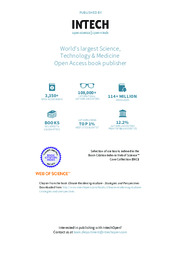Low carbon technologies for agriculture in dryland: brazilian experience.
Low carbon technologies for agriculture in dryland: brazilian experience.
Author(s): GIONGO, V.; SALVIANO, A. M.; ANGELOTTI, F.; TAURA, T. A.; LEITE, L. F. C.; CUNHA, T. J. F.
Summary: Anthropogenic activities have altered the atmospheric composition since the industrial era, especially with the increasing greenhouse gas emission due to fossil fuel combustion, cement production, and land-use change. The Brazilian semiarid, covering approximately 969.589 km2 with 21 million people, region has 1.6 million agricultural establishments and 95% are classified as family farms. The typical agricultural systems are characterized by high grazing density, slash and burn practices, and fruits and legumes by irrigated monocultures. Consequently, soil degradation occurs due unsustainable soil management, decreasing soil carbon stock, and the biodiversity. The soil carbon depletion is also associated with saline, water, and thermal stresses. Saline, water, and thermal stresses in dryland, the impact of the land-use change associated with climate change, and few technological resources available for use in agricultural systems are the main reasons responsible for low productivity in the Brazilian semiarid region. Low-cost agricultural practices can contribute to build healthy and sustainable agroecosystems: among these, the selection of plant species tolerant to saline, water, and thermal stresses, the use of rhizobial inoculants, adoption of no-tillage, sowing green manure, and adoption of technologies to stock water to improve its efficiency and productivity.
Publication year: 2018
Types of publication: Book sections
Unit: Embrapa Semi-arid Region
Observation
Some of Embrapa's publications are published as ePub files. To read them, use or download one of the following free software options to your computer or mobile device. Android: Google Play Books; IOS: iBooks; Windows and Linux: Calibre.
Access other publications
Access the Agricultural Research Database (BDPA) to consult Embrapa's full library collection and records.
Visit Embrapa Bookstore to purchase books and other publications sold by Embrapa.

